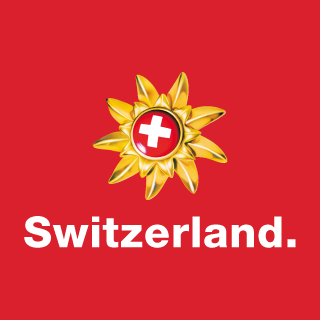Secret paradise: Grande Cariçaie. A place of peace and diversity.
Intro
The Grande Cariçaie is Switzerland’s largest lakeshore wetland, and the home of rare, endangered flora and fauna. For us humans, it offers peace and recovery, surrounded by natural splendour.
Grande Cariçaie
The Grande Cariçaie extends over 40 kilometres on the southern banks of Lake Neuchâtel, spanning the cantons of Fribourg, Vaud, Neuchâtel and Bern. The largest part of the Grande Cariçaie is located in the Vaud and Fribourg areas. It includes eight nature reserves with a total area of around 3,000 hectares, making it Switzerland’s largest lakeshore wetland. This very helpful map of the Grande Cariçaie is not just clearly designed but also includes valuable information about the Grande Cariçaie, and its flora and fauna.
The Grande Cariçaie has around 10,000 native animal species and 800 plant species. This makes it a habitat for one-quarter of Switzerland’s flora and fauna, including countless rare and endangered species. It is important that such rich biodiversity should be preserved and protected. This does not mean that visitor access will be compromised, but information boards, workshops and guided tours will draw attention to the fragility of the ecosystem.
- Shore length 40 kilometres
- Area 3,000 hectares
-
Plant species
800
- Wildlife species 10,000
The biologist’s heart races here.
Biologists from the Grande Cariçaie Association help monitor the flora and fauna. Their key tasks include analysis of species groups and the best possible protection of the natural habitats of animals and plants. They particularly focus on species that are rare and endangered across Switzerland as a whole, but well represented in the Grande Cariçaie. If biologists identify negative developments, they can alert the Grande Cariçaie Association, which will then take measures to ensure the animals’ and plants’ protection. The biologists mainly work outside in the summer months (although some birdwatching also takes place in winter). They are in the field for around half of the time in spring and summer.
It’s a unique place, with nowhere else like it.
Bringing the natural world closer
Aline Cardinaux completed his Master’s degree in Biology at the University of Lausanne in 2018. She has always been interested in nature and its varied species. She is very happy to be sharing her knowledge, and thereby raising awareness. At the end of her studies, she therefore completed a placement with the Grande Cariçaie Association, where she tried to bring the nature reserve and its visitors closer together. This also sparked a collaboration with the tourist office in Estavayer-le-Lac. Guided tours of the Grande Cariçaie on various topics (amphibians, beavers, birds, by bike, canoeing etc.) were gradually developed.
This is Switzerland’s largest lakeside wetland area, with impressive biodiversity.
From childhood dream to profession.
Christophe Le Nédic is a professional biologist. He completed his science degree at the University of Lausanne in 1988. He came to biology through his passion for nature protection and bird-watching, which he has enjoyed since the age of ten. His work with the Grande Cariçaie Association began in 1987 as part of a project involving the monitoring of flora and vegetation. In 1990, he was initially responsible for botanical monitoring, and soon became interested in public relations. These days, he is hardly involved in botany at all, but is responsible for communications and for the management of visitors in the nature reserves. He also handles the legal protection of the area, which is related to all spatial planning projects around the protected zone.
What does the name Grande Cariçaie mean?
Golden sedge (Carex elata)
Before heading into the natural environment, a word or two about the name “Grande Cariçaie” itself. The nature reserve is named after a plant species that is present in all eight nature reserves: golden sedge (Carex elata). This type of sedge forms a type of tuft (tassels) and grows to a height of up to one metre. It is a marsh plant that is very widespread in Switzerland.
Not to be confused with the common reed (Phragmites australis)
Golden sedge is not to be confused with the common reed (Phragmites australis). This belongs to a different botanical family and is classified as a cereal crop. The common reed can grow up to five metres tall.
Reeds swooshing in your ears
Another distinctive feature of the Grande Cariçaie are the wooden walkways which mean you can wander between golden sedge (Carex elata) and reed beds. This brings the natural experience even more alive for visitors. The calming swishing sound of the reeds in a gentle summer’s breeze accompanies a walk across the Grande Cariçaie. If you walk slowly, looking left and right, you will see many insects, bird species and even a busy beaver.
Here are a few tips of where you can find particular animals from spring to autumn:
- The great crested grebe is in flight in May with its young, and can be seen at the Pro Natura Centre in Champ-Pittet above all.
- Beavers leave traces everywhere along the banks of the lake. It’s best to look out for them there in the evenings.
- At the Birdlife Nature Centre in La Sauge, it is possible to watch kingfishers breeding.
- The Schnurrbartschwanz is the mascot of the Grande Cariçaie and can easily be seen around the lake shore of the village of Gletterens.
Whether by water or on land, ... ... the Grande Cariçaie can be explored in many different ways.
Before starting to explore the Grande Cariçaie, here are a few rules for an exploratory tour:
- stay on paths and in permitted areas
- keep dogs on a leash
- do not disturb animals or pick flowers
- take any waste away with you
- fire and tents are prohibited, except in designated areas
Birdlife Nature Centre in La Sauge
The Birdlife Nature Centre in La Sauge, is located on the south-eastern shore of Lake Neuchâtel, on the edge of the Cudrefin protected zone. Cudrefin is one of eight nature reserves that make up the Grande Cariçaie. The nature centre hosts special exhibitions and has a 500-metre outdoor nature trail with four observation points. For a successful trip, you need binoculars, a guide and patience – because here the point is to watch animals without disturbing them. The centre and outdoor facilities are completely wheelchair accessible.
Tip: Take a boat along the Broye canal from Murten, and alight in La Sauge. Then you can continue in the Grande Cariçaie on foot or by bike.
On the western side of the lake near Yverdon-les-Bains, the Pro Natura Centre Champ-Pittet acts as an entrance gateway to the Grande Cariçaie nature reserve.
A guided tour of the Grande Cariçaie area with biologists can be booked at both the Birdlife Nature Centre in La Sauge and the Pro Natura centre in Champ-Pittet. Of course, visitors can explore the area on their own, by following three natural educational paths across the marsh, forest and gardens. Binoculars are available for hire at reception. There is also a hundred-year-old beehive, an exhibition about honey and wild bees and two trails for the little ones, who can roam across the whole area in search of a honey thief and a missing mother hedgehog.
Sun-lovers and water babies
Immersion in the Stone Age
In the pile-dwelling village of Gletterens, visitors discover a Neolithic settlement typical of Switzerland. Thanks to the authentic reconstructions, the visit offers an insight into the way of life of our ancestors, admiration of the archaeological finds and an exciting glimpse into life thousands of years ago.
The pile-dwelling village of Gletterens organises events, animations and workshops on prehistory and the life of the first farmers who lived on the shores of Lake Neuchâtel. In addition to activities and demonstrations of prehistoric crafts, the pile-dwelling village also offers special overnight accommodation. From mid-May to mid-September, weatherproof tipis and other hide shelters make you feel like a man or woman from prehistoric times.
Other ways to explore the Grande Cariçaie
There are many ways to discover the flora and fauna of the Grande Cariçaie:
- on a guided canoe tour
- from many observation towers
- on other summer trips – by bike, stand-up paddle board or on a beaver hunt
Murten excursion trip
The boat trip from Murten to Neuenburg, which take about one and a half hours, is highly recommended: from the medieval Zähringen town of Murten, you pass the vineyard slopes of Vully and down the Broye canal to the Belle Epoque city of Neuchâtel. To go directly from Murten to the Grande Cariçaie by boat, alight at “La Sauge” on the Broye canal to visit the Birdlife Nature Centre there and hike safely in the Grande Cariçaie. Buses and trains run regularly between the individual villages.

